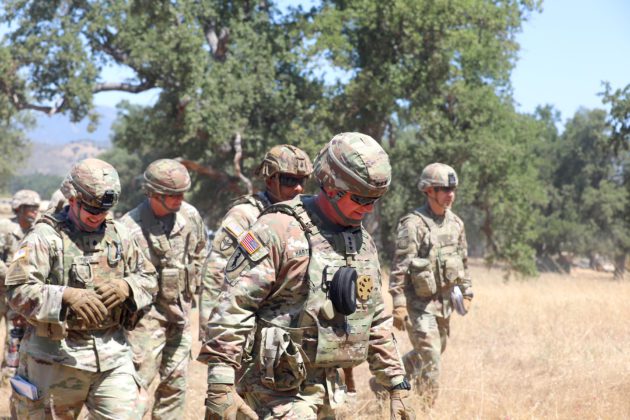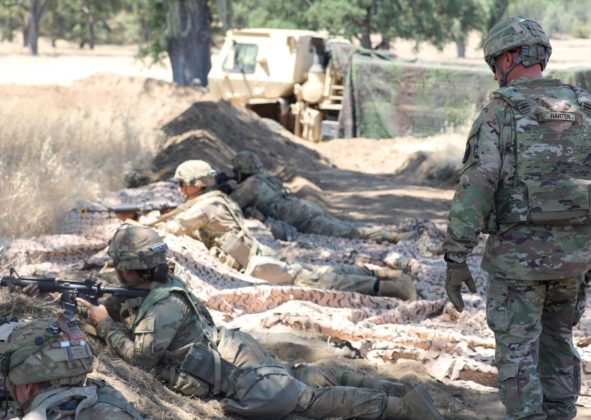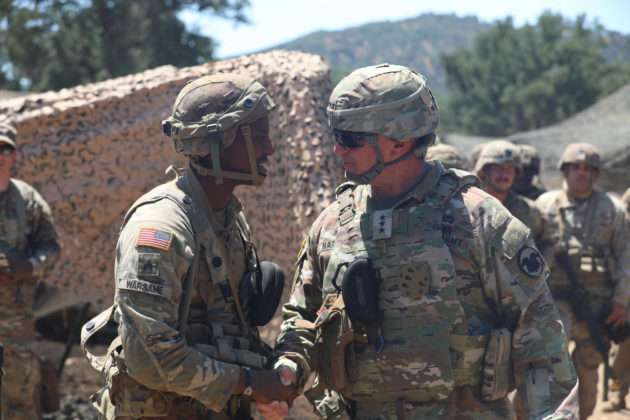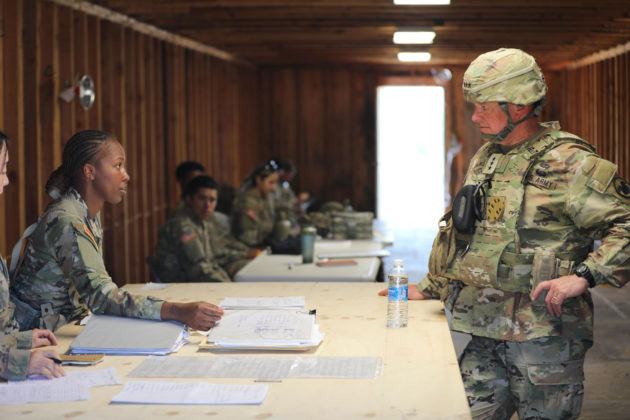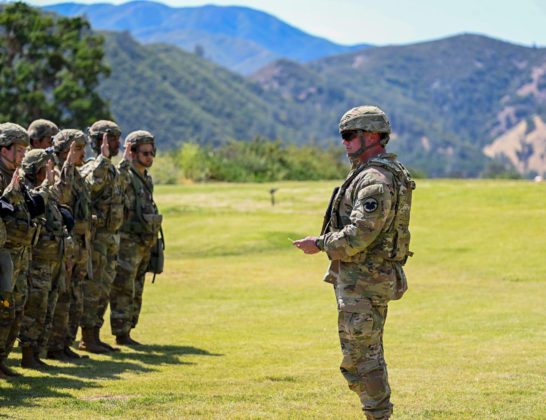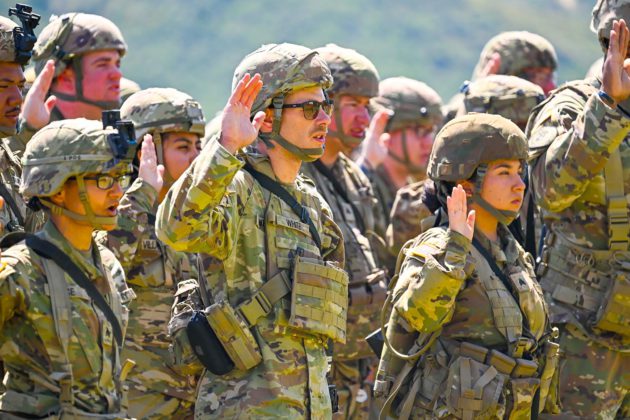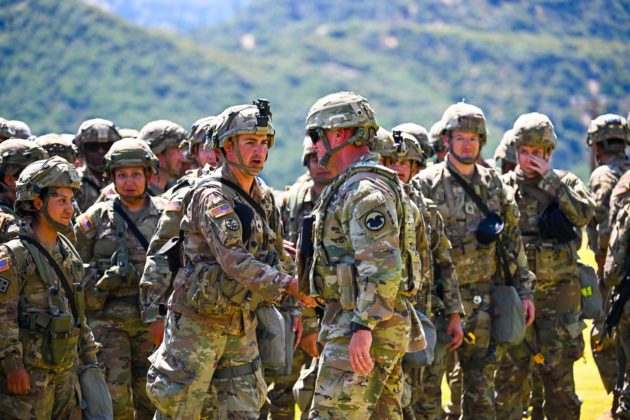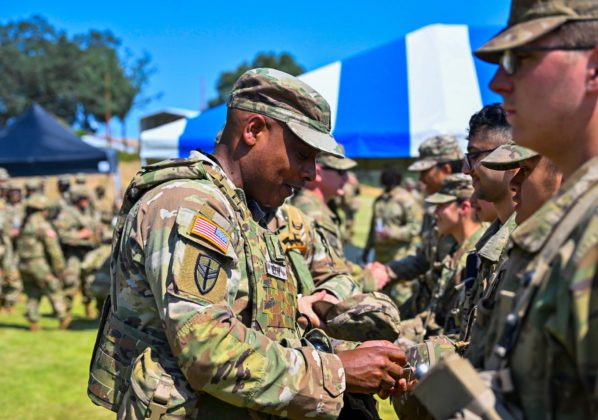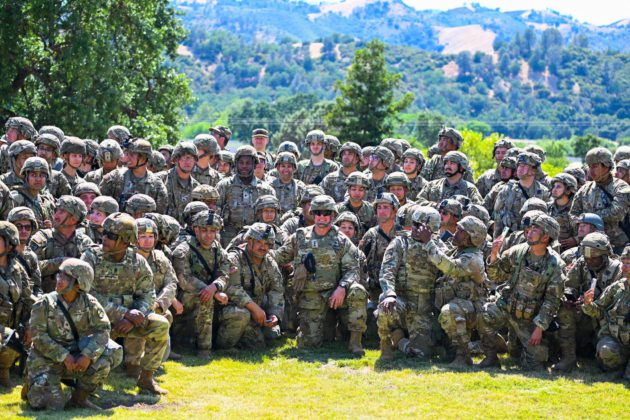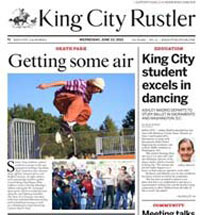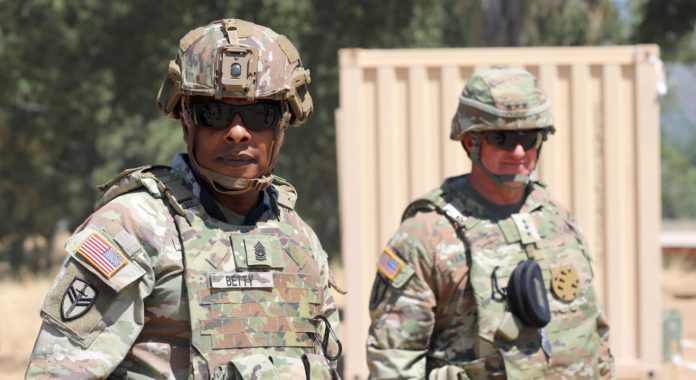
JOLON — In the rugged terrain of Fort Hunter Liggett near Jolon in South Monterey County, more than 9,000 Army Reserve soldiers pushed the limits of readiness and integration during Operation Mojave Falcon 2025 — the largest and most complex training event in Army Reserve history.
From June 4-5, the Army Reserve command team visited the training site to observe operations, engage directly with troops and reinforce the importance of Total Force capability in today’s dynamic operational environment.
Lt. Gen. Robert D. Harter, Chief of Army Reserve and Commanding General of the U.S. Army Reserve Command; Command Sgt. Maj. Gregory Betty, the Army Reserve’s senior enlisted advisor; and Chief Warrant Officer 5 Lashon White, the Army Reserve Command Chief Warrant Officer, conducted battlefield circulation through Tactical Assembly Areas (TAAs), mission nodes and support hubs across the installation.
“Operation Mojave Falcon 2025 is the most ambitious training event in Army Reserve history — and it’s no accident,” Harter said. “This is our Super Bowl. It’s how we validate that our soldiers, formations and systems are ready to fight and win in large-scale combat operations the moment we’re called. Every convoy, every scenario, every decision here is about building lethal, survivable combat power.”
The exercise brings together elements of Combat Support Training Exercise (CSTX), Global Medic, Quartermaster Liquid Logistics Exercise (QLLEX) and Nationwide Move. The result: a synchronized training operation spanning from the Pacific Coast to the Midwest with active involvement from Army Reserve, Active Duty, Department of the Army Civilians and multinational allies.
“What makes Mojave Falcon so effective isn’t just its scale — it’s the unity of effort,” Harter said. “Army Reserve units are operating side-by-side with Active Duty, National Guard, civilian partners and allies. Whether it’s moving fuel across 1,200 miles or evacuating casualties in real time, we’re demonstrating what Total Force readiness truly looks like in action.”
Command Sgt. Maj. Betty focused on mentorship and readiness at the individual soldier and squad level, speaking directly with junior enlisted troops and noncommissioned officers during tactical operations.
“What I saw out here was disciplined formations executing the fundamentals,” Betty said. “These soldiers are motivated, they’re lethal and they’re hungry to lead. This is the kind of force we want to put forward — to support the Total Army and to defend the nation.”
Chief Warrant Officer 5 White spent extended time at forward TAAs, visiting fuel points, maintenance bays and command posts, where he interacted with warrant officers and technical specialists leading critical sustainment and logistical operations.
“Mojave Falcon gives our warrant officers and technical experts the environment they need to test systems, adapt procedures, and lead with precision,” White said. “From logistics planners to maintenance officers, they’re proving the Army Reserve is a technical force multiplier.”
White emphasized that field environments like Mojave Falcon are key to warrant officer development — challenging them to apply their skills and lead through ambiguity and operational stress.
In a powerful moment that underscored the force’s commitment, the command team presided over a mass re-enlistment ceremony involving more than 160 soldiers from 33 units and 43 different MOSs. Lt. Gen. Harter personally administered the oath of enlistment at the heart of the training base.
“This exercise isn’t just a test of our systems — it’s a testament to our people,” Harter said. “When over 160 soldiers raise their right hand and re-enlist in the middle of the toughest training we offer, that tells you everything you need to know about the strength of our force. These soldiers believe in the mission, the team and the future of the Army Reserve.”
Operation Mojave Falcon 2025 continued through June 12, with the exercise culminating in a force-wide assessment of operational readiness and mission execution — reinforcing the Army Reserve’s critical role in supporting and sustaining large-scale combat operations worldwide.
“Every convoy, every scenario, every decision here is about building lethal, survivable combat power,” Harter concluded. “That’s what we do. That’s who we are.”


